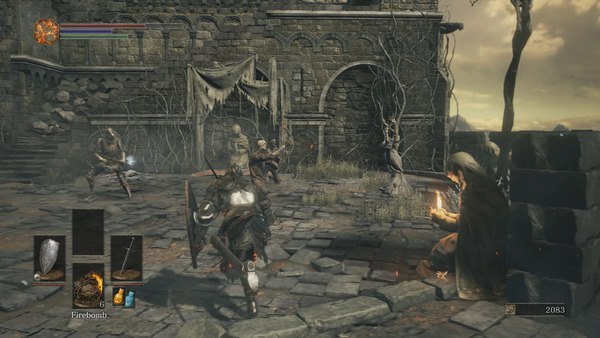Dark Souls III is renowned for its challenging gameplay, intricate lore, and richly detailed environments. For many players, the game can feel overwhelming, especially for newcomers. This guide aims to provide a step-by-step approach to mastering Dark Souls III, covering essential strategies, character builds, combat mechanics, and more. Whether you’re a seasoned veteran or a newcomer to the series, this article will help you navigate the perilous world of Lothric.
Introduction
In Dark Souls III, players face a myriad of challenges that require not only skill but also strategy and preparation. From choosing the right character class to mastering combat techniques, every decision impacts your journey. This guide will cover various aspects of gameplay to help you survive and thrive in the dark and foreboding world of Dark Souls III.
Understanding Character Creation

Choosing Your Class
When starting your journey in Dark Souls III, the first decision you’ll make is selecting a character class. Each class has unique strengths, weaknesses, and starting equipment. Here’s a brief overview:
- Knight: A balanced class with strong armor and a sword, ideal for beginners.
- Warrior: Focused on strength, perfect for heavy weapons.
- Sorcerer: Starts with powerful magic, suitable for ranged attacks.
- Cleric: A hybrid class with healing spells and decent melee capability.
Tips for Class Selection
- Consider Playstyle: Do you prefer melee combat, ranged magic, or a balanced approach? Choose a class that complements your playstyle.
- Attributes: Look at the starting attributes of each class. If you want to use heavy weapons, for example, the Warrior or Knight may be best.
Customizing Your Character

After selecting a class, you can customize your character’s appearance and starting gift. The starting gift can provide a crucial advantage early on. Here are a few recommended gifts:
- Life Ring: Increases your health, which is beneficial for all classes.
- Fire Gem: Useful if you plan to use fire-infused weapons.
- Sooty Ashes: Provides a starting supply of healing items.
Mastering Combat Mechanics
Understanding Stamina Management
Stamina is a vital resource in Dark Souls III, governing your ability to attack, dodge, and block. Managing your stamina effectively is crucial to surviving encounters.
Key Tips for Stamina Management
- Dodge Wisely: Rolling and dodging use stamina. Make sure to leave enough stamina for counterattacks.
- Block Smartly: Blocking with a shield consumes stamina. Avoid blocking attacks that will drain your stamina quickly.
- Know Your Limits: Always keep an eye on your stamina bar during combat to avoid being caught off guard.
Timing Your Attacks
In Dark Souls III, timing your attacks is just as important as knowing when to defend. Mastering attack timing can turn the tide in challenging battles.
Techniques for Better Timing

- Light vs. Heavy Attacks: Light attacks are quicker but deal less damage. Heavy attacks are slower but can stagger enemies. Use a mix for best results.
- Backstabs and Parries: Executing backstabs and parries can deal significant damage. Practice these techniques against weaker enemies to master them.
Leveling Up Effectively
Understanding the Leveling System
Leveling up in Dark Souls III allows you to allocate points to various attributes, enhancing your character’s abilities. The key attributes include:
- Vitality: Increases health.
- Attunement: Increases spell slots.
- Endurance: Enhances stamina and equip load.
- Strength/Dexterity: Influences weapon scaling.
Prioritizing Attributes
- Focus on Your Build: If you’re a melee fighter, prioritize Strength or Dexterity. For magic users, invest in Attunement and Intelligence.
- Balanced Approach: Don’t neglect Vitality and Endurance, as they are crucial for survivability.
Utilizing Bonfires for Leveling
Bonfires serve as checkpoints and allow players to level up, heal, and replenish items. Here’s how to make the most of them:
- Resting at Bonfires: Always rest to refill your health and Estus flasks before venturing into dangerous areas.
- Fast Travel: Unlock fast travel to move quickly between bonfires, saving time when leveling up or returning to earlier areas.
Exploring the World of Lothric

Learning the Map Layout
Dark Souls III features a labyrinthine world filled with secrets, shortcuts, and hidden paths. Familiarizing yourself with the map is crucial for effective exploration.
Key Areas to Focus On
- Lothric Castle: A central hub with various paths leading to bosses and items.
- Firelink Shrine: The main hub for leveling, item upgrades, and NPC interactions.
- The Abyss: An area that becomes accessible later in the game, filled with challenging enemies and lore.
Finding Items and Upgrades
Throughout Lothric, players can discover weapons, armor, and items that enhance their capabilities. Here’s how to maximize your item collection:
- Thorough Exploration: Always search for hidden paths and areas. Items can be found off the beaten path.
- Interact with NPCs: Talking to NPCs can unlock quests and provide valuable items.
Mastering Boss Fights

Preparing for Boss Battles
Bosses in Dark Souls III are formidable foes that require preparation and strategy. Here are essential steps for tackling boss fights:
Gear Up Properly
- Upgraded Weapons: Ensure your weapon is upgraded to maximize damage.
- Buffs and Consumables: Use buffs like Charcoal Pine Resin to increase damage output.
Learning Boss Patterns
Each boss has distinct attack patterns. Studying these can provide openings for counterattacks. Here’s how to effectively learn patterns:
- Observe Carefully: Spend the first phase of the fight observing the boss’s moves.
- Practice Dodging: Timing your dodges can create opportunities to strike back.
Co-op and PvP Strategies
Engaging in Co-op Play
Dark Souls III allows for cooperative play, enabling players to summon allies for tough encounters. Here’s how to effectively engage in co-op:
Summoning Allies
- Use the White Sign Soapstone: Place your sign in areas where others are likely to summon help.
- Stay Together: Communication and teamwork are crucial for success.
Participating in PvP
Player versus Player (PvP) combat adds another layer of challenge to Dark Souls III. Here are strategies for engaging in PvP:
- Know Your Build: Understand your character’s strengths and weaknesses in PvP.
- Timing and Distance: Maintain distance to avoid being caught off guard. Use ranged attacks if necessary.
Crafting the Perfect Build
Understanding Build Types
Crafting a successful build in Dark Souls III requires a deep understanding of character mechanics and playstyle. Common build types include:
- Strength Build: Focuses on heavy weapons and high damage output.
- Dexterity Build: Emphasizes speed and finesse, using lighter weapons.
- Magic Build: Centers on sorceries and miracles for ranged combat.
Customizing Your Build
- Choose Weapons Wisely: Select weapons that scale well with your chosen attributes.
- Armor and Equipment: Consider your equip load when selecting armor. Aim for a balance between protection and mobility.
Adapting to Challenges
As you progress, you may face challenges that require adjustments to your build. Here’s how to adapt:
- Experiment with Weapons: Try different weapons and find what suits your style best.
- Respec Options: Utilize the respec option at a specific NPC to reallocate attributes if your build needs a significant change.
Managing Resources
Understanding Estus Flasks
Estus Flasks are crucial for healing during your journey. Knowing how to manage these resources effectively is vital.
Tips for Managing Estus
- Allocate Wisely: Decide whether to prioritize healing or focus on magic replenishment based on your playstyle.
- Use Healing Items: Keep healing items in your inventory for emergencies.
Collecting Souls
Souls are the currency in Dark Souls III, used for leveling up, purchasing items, and upgrading gear. Here’s how to maximize your soul collection:
- Defeat Enemies: Regularly defeat enemies to gather souls.
- Explore Thoroughly: Hidden areas often contain soul items that can provide significant boosts.
Conclusion: Mastering Dark Souls III
Mastering Dark Souls III requires patience, strategy, and an understanding of its complex mechanics. From character creation to engaging in boss battles, each aspect of the game is interconnected, requiring players to adapt and learn from their experiences. By following this guide, players can navigate the challenges of Lothric, honing their skills and strategies to emerge victorious in a world filled with peril and darkness.
Final Tips for Success
- Practice Makes Perfect: Don’t be discouraged by failure. Each defeat is a learning opportunity.
- Community Engagement: Engage with the Dark Souls community for tips, builds, and support.


